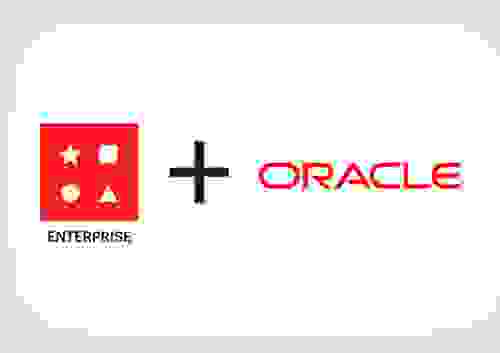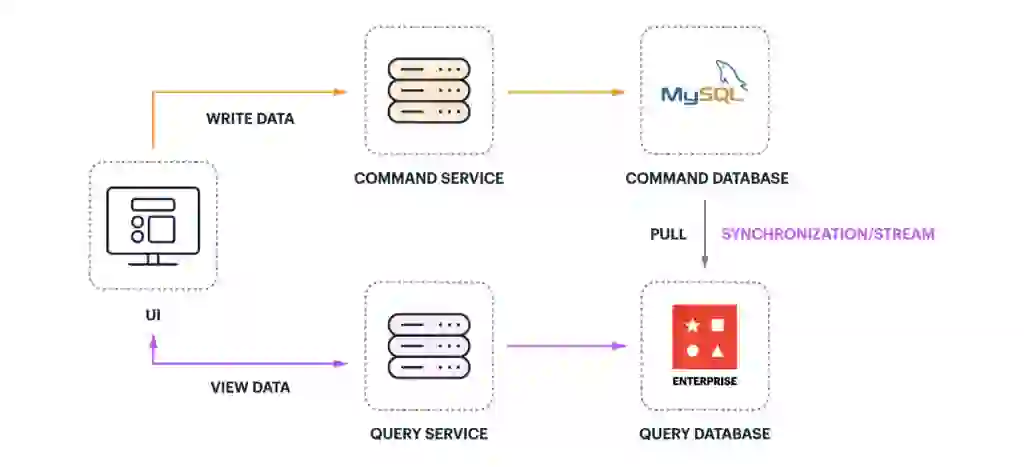
Learn more

Are your applications running on MySQL performing to their optimum potential? Not so much, right? Discover three ways Redis Enterprise can help you overcome common obstacles in MySQL – with minimal code changes and zero disruption to your application. Want to dive even deeper into how Redis Enterprise can help either as a cache or a primary database? Click below to read our dedicated MySQL solution brief.
Download Modernize Your MySQL Database With Redis Enterprise
MySQL is a really great, free, open source database solution until… it isn’t. After getting started, it’s very common for products and services to eventually run into issues with performance, scaling, and innovating outside of MySQL’s rigid SQL-based environment. To meet today’s user expectations, your MySQL needs real-time performance, sustained scalability, and support for MySQL use cases beyond what’s available out of the box.
Redis Enterprise, the leading real-time data platform, can be used alongside MySQL to store data in-memory to greatly relieve the challenges associated with MySQL: speed, scalability, and inflexible data types. Let’s enhance and extend the life of your MySQL by enabling the sub-millisecond performance that modern use cases require.
Redis Enterprise can be used alongside your MySQL database to store your application’s most critical and commonly-accessed data in-memory to deliver it with sub-millisecond speed. Let’s go into more detail on the how.

Okay, look, MySQL’s speed isn’t too bad… for a relational database. But that’s not saying much for real-time use cases that require sub-millisecond speed. Yes, MySQL Query Cache is an in-memory option available with your MySQL environment, but you must actively set up and maintain this feature. You’re also stuck with the same data types and SQL statement executions. The lack of data types in this caching solution puts a very small box around what type of caching use cases you can enable.
Plus, you will have to continue working with SQL statements inside of your cache, meaning you’ll constantly be changing variables and optimizing SQL statements to increase the response time of these queries. It’s a very hands-on caching solution, to say the very least! MySQL caching aside, MySQL performance on secondary indexes is infamously poor as it usually includes scanning columns and combinations of columns, making it very inefficient for quick query responses.
What about those pesky secondary indexed queries? You can use Redis Enterprise to offload them, speeding up the responses to your applications and taking some of that scaling pain off of your MySQL database, reducing costs as well!
Speaking of scaling issues, let’s dive into what scaling pains you’ll experience with MySQL and how you can remedy them.

MySQL performance tuning is a popular topic for a reason. Sooner or later, the sheer amount of data in your MySQL database will take a hit in performance and availability. There are a number of variables to consider when scaling MySQL efficiently, ranging from hardware to software tuning.
From a hardware perspective, constant monitoring and right-sizing are needed for storing your HDD or SSD, the processor (which is very expensive to upgrade), memory (RAM for caching), and network traffic.
Regarding software, MySQL performance and scalability issues are sensitive to the version of MySQL you’re running. Making sure you have the most current version is highly recommended. From there, it comes down to optimizing SQL queries. Scalability in MySQL can’t handle running complex queries against large data volumes.
These complex queries can be offloaded to Redis Enterprise, which is much, much faster at processing, reducing the number of resources you need in MySQL. Using Redis Enterprise alongside your MySQL database allows you to run resource-hungry queries on MySQL only when they are needed (while adding real-time speed). Most queries are handled by the in-memory Redis Enterprise, freeing up the capacity of your MySQL database for what it’s good at. Issues start when solutions are built off MySQL to do something it was never intended for!
MySQL doesn’t have the diverse data needs of modern applications, like a variety of data types and data models that can be deployed quickly and easily anywhere in the world.
Get the full potential from your MySQL data by supporting the diverse data types and data models that are the core necessities of modern-day applications. For example, use Redis Enterprise to build a real-time search engine. Redis Enterprise has a built-in real-time search engine that can be used with your MySQL database to significantly speed up complex queries. Reduce the time it takes to return your MySQL data to your customers and services, plus offload those expensive and complex queries. That is just the start; there are many other data types and data models that Redis Enterprise supports natively, so you can combine all your real-time needs on one platform, not just for MySQL:
What about MySQL cloud? Redis Enterprise can be deployed on the cloud vendor’s versions of MySQL, such as Amazon RDS, Cloud SQL for MySQL on Google Cloud, or Azure MySQL. Almost none of these vendors provide the most performant version of MySQL, MySQL HeatWave. Redis Enterprise is the best managed-service, in-memory solution in the cloud. Taking the administrator out of the equation by not having to constantly worry about hardware, software versioning, and much more.
To avoid creating a bottleneck in their application, database or network layers, many developers use Redis for the following use cases:
In addition to the examples above, Redis can be used as a message broker, data structure store and temporary data store for a variety of use cases. Essentially, Redis gets your data closer and faster to your end user, while collecting their data more quickly. Taking things to the next level, Redis Enterprise offers high availability, in-memory replication, auto-scaling and re-sharding, along with leading-edge CRDT-based active-active support for distributed databases and built-in Redis modules such as Search and Query, JSON, And Probabilistic.
This should be a good start on transforming your MySQL database’s speed and scalability while adding real-time performance for your applications. And there is much more than just speed, scalability, and additional use cases – how about auto scaling, enterprise clustering, and Active-Active Geo-Distribution of your most frequently accessed data with 5-9s of high availability? All of this is included with Redis Enterprise Software or Redis Enterprise Cloud.
The next question you might have is, “How do I start this MySQL integration with Redis Enterprise?” We have that covered as well. CDC (change data capture) allows data to quickly and easily move your frequently accessed data and complex queries from your MySQL into Redis Enterprise, and we have a CDC tool just for that, Redis Connect.
Want to learn more? Check out how to get the most out of your MySQL database with Redis Enterprise.